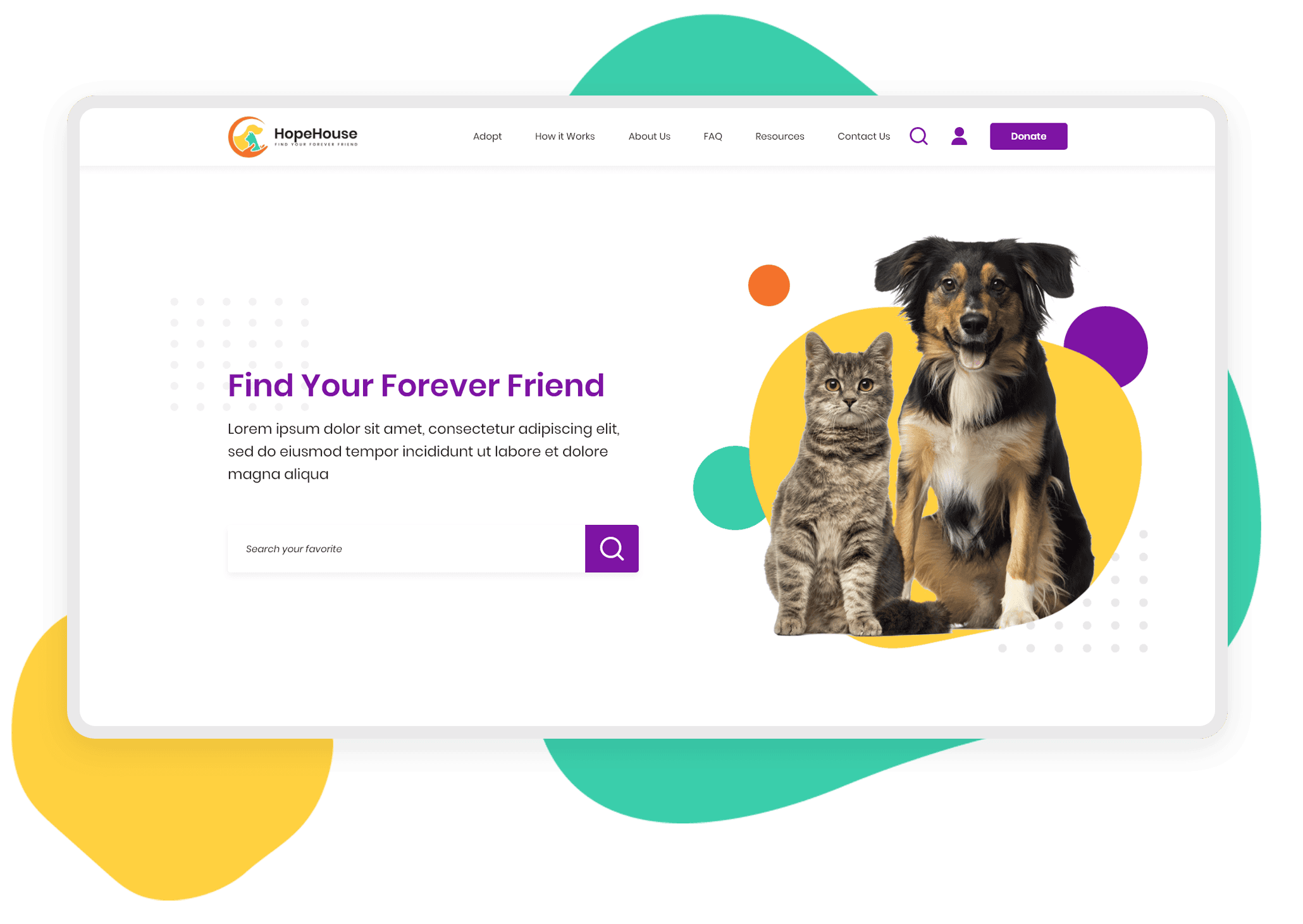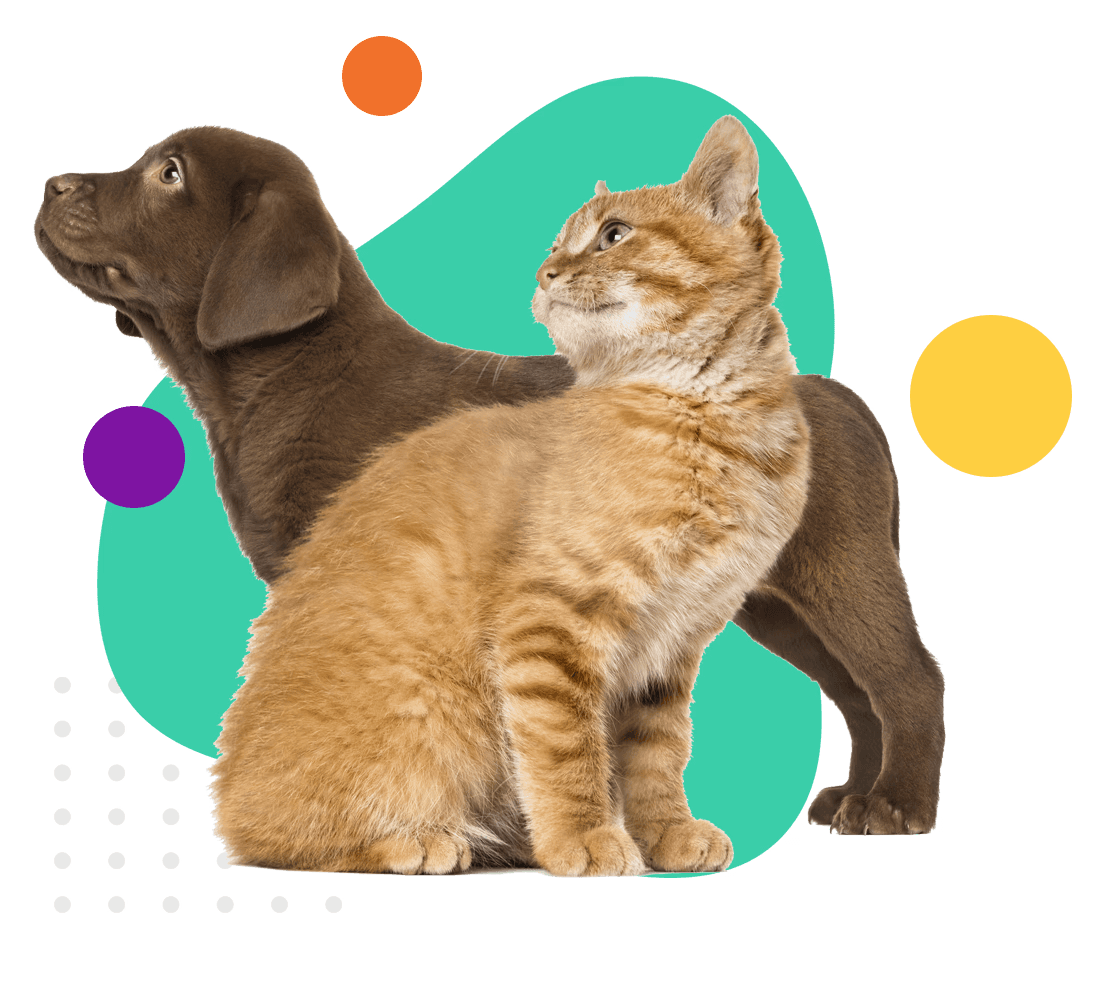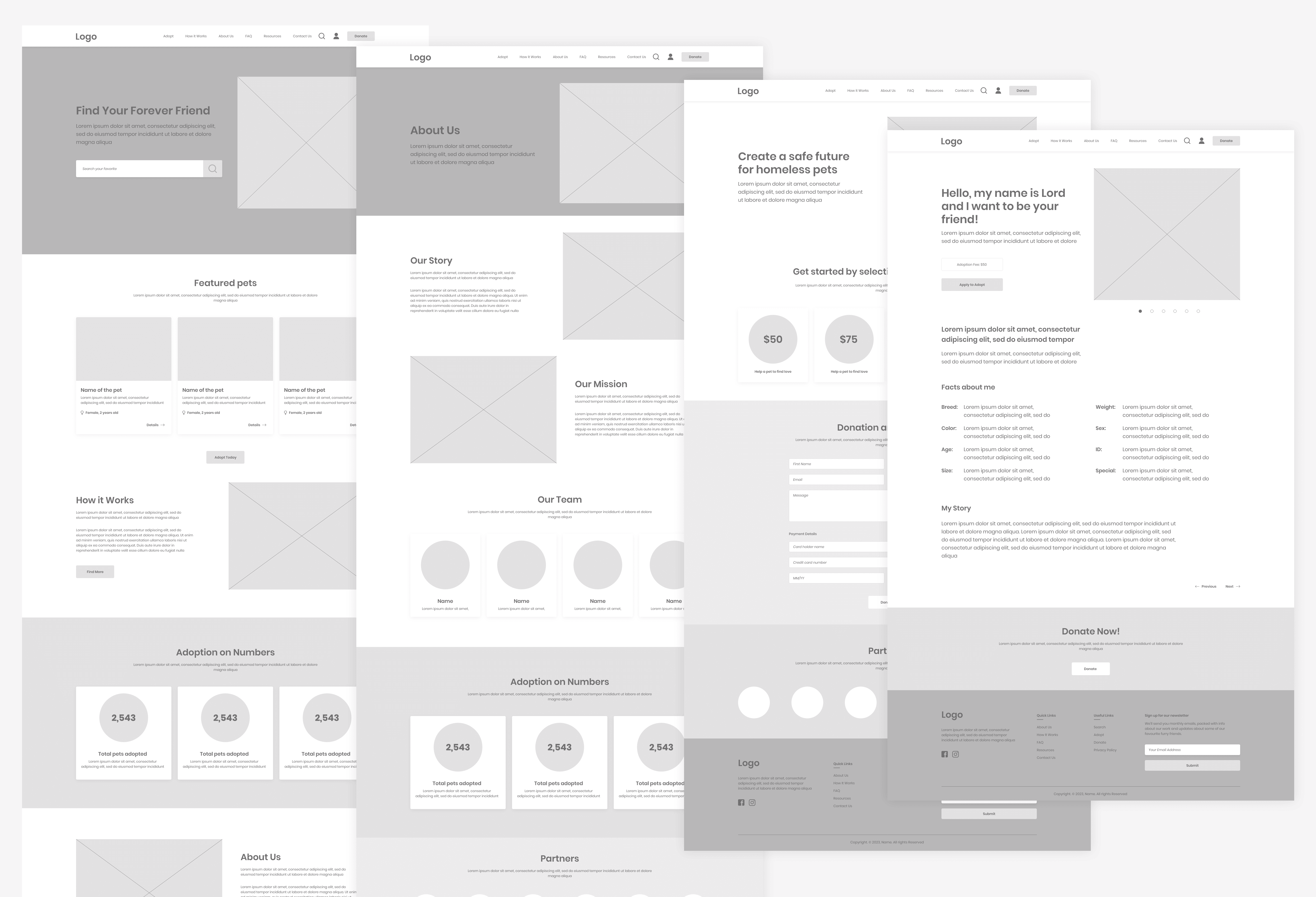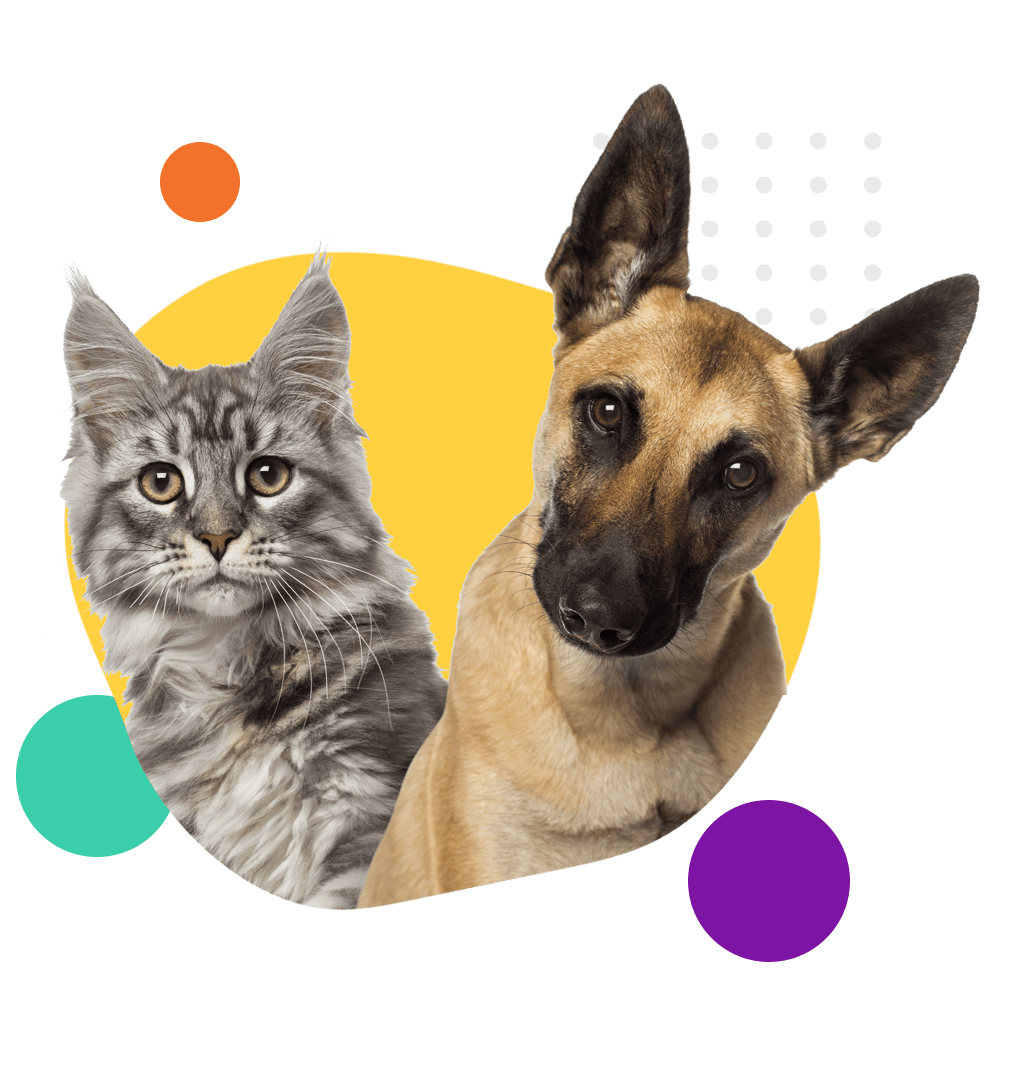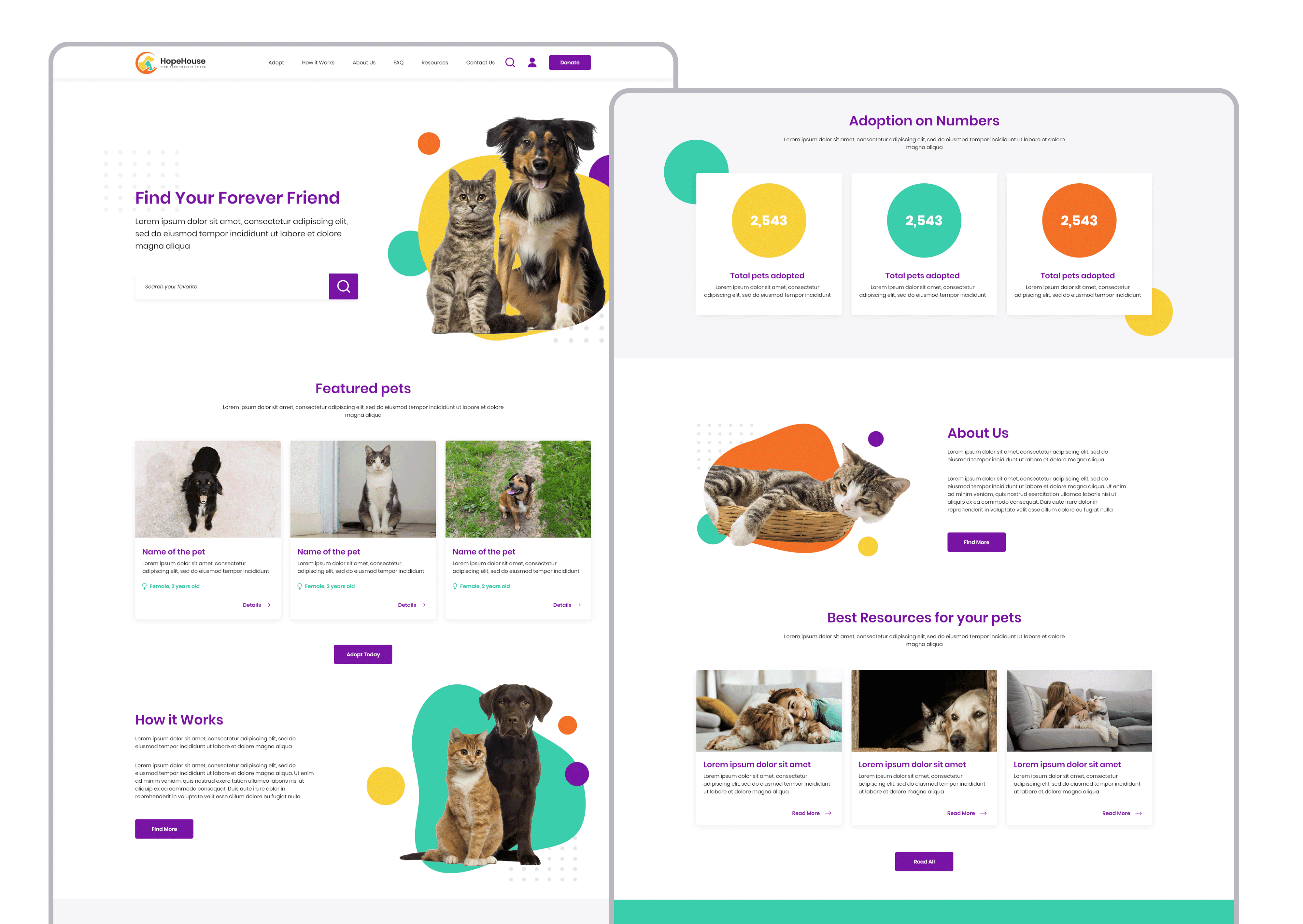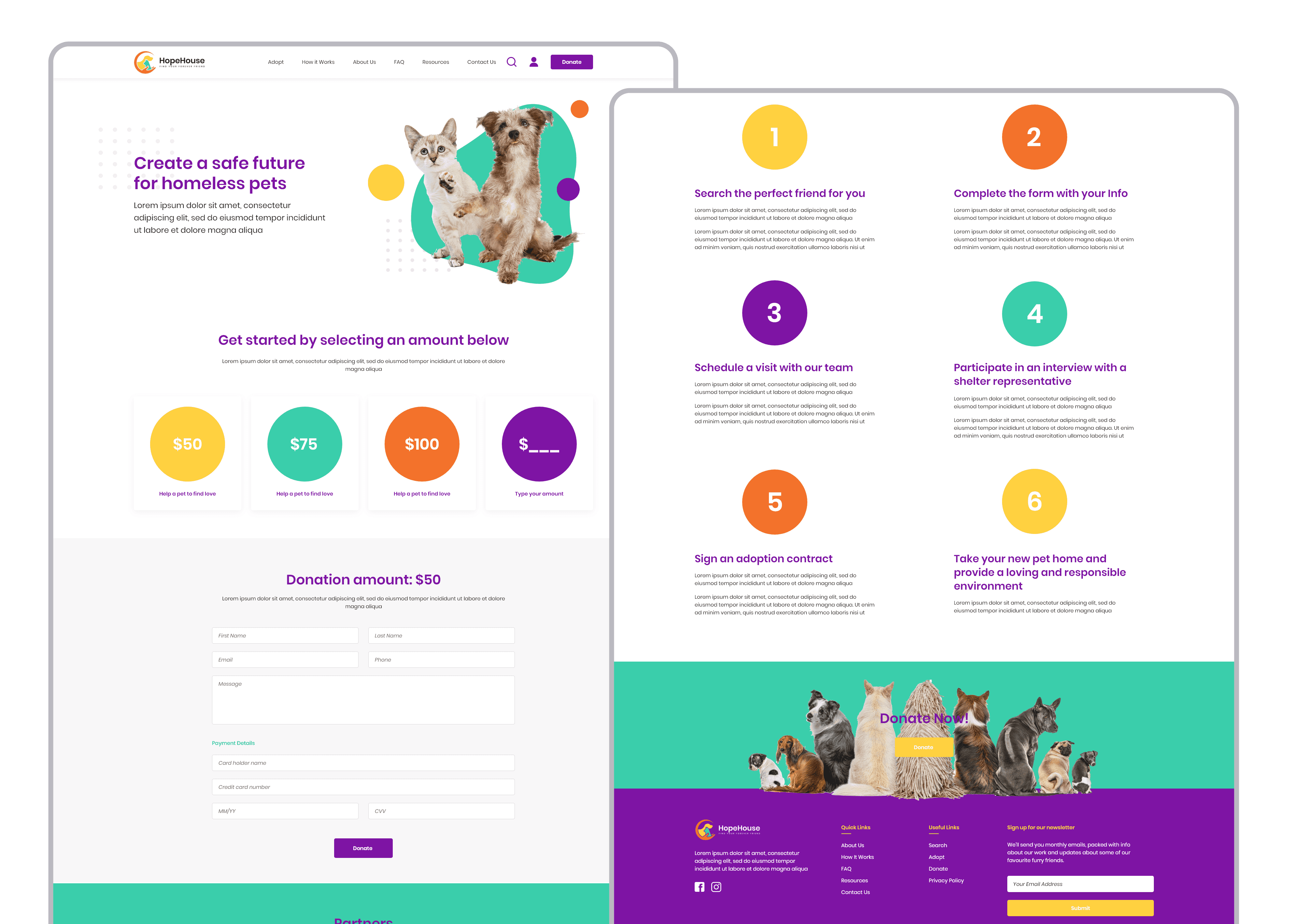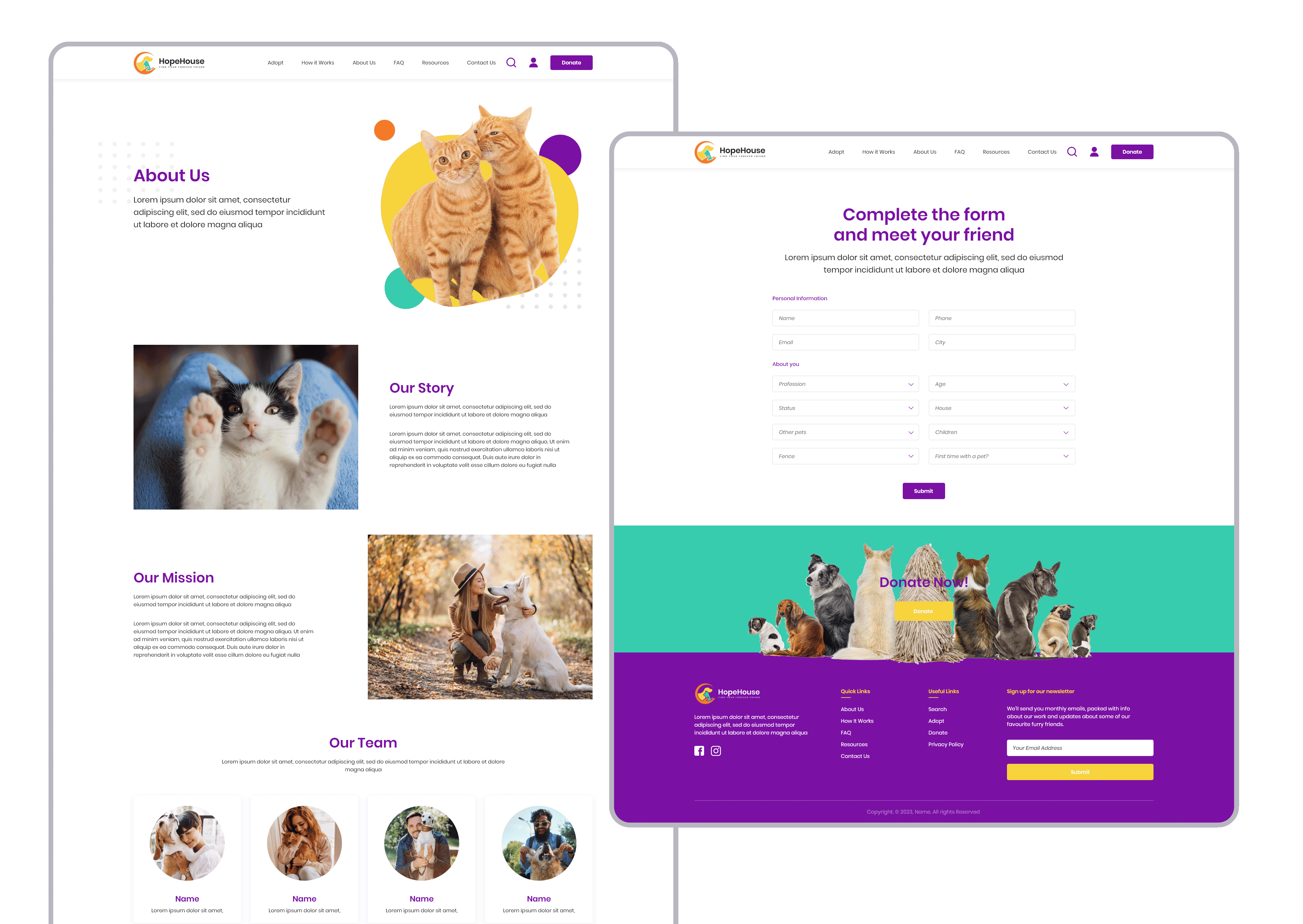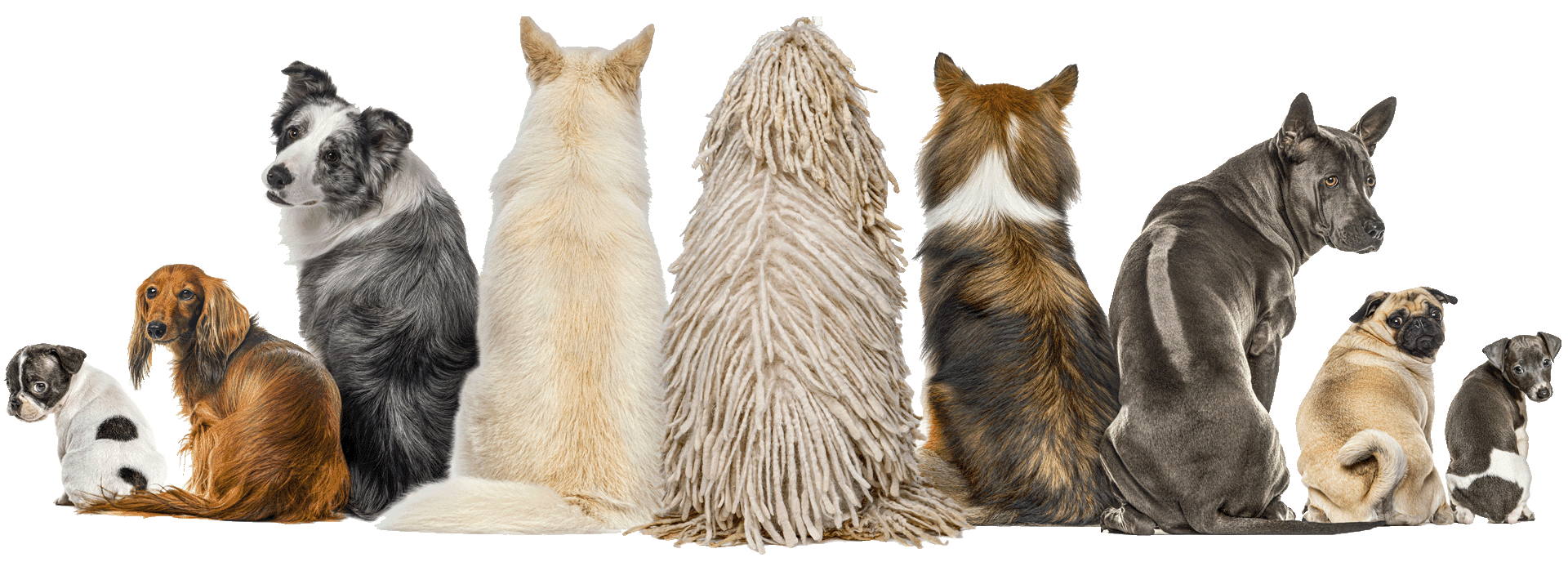Hope House - UX/UI case study
A website that offers the possibility to adopt dogs and cats
and also to donate for a good cause
Project overview
The product
Website offers the chance to find your new furry friend by adopting cats and dogs from local shelters, as well as the opportunity to make a difference by donating to a good cause.
The problem
Many cats and dogs are in need of homes and support due to overpopulation, abandonment, and neglect. Animal shelters often struggle to find enough adopters, resources, and volunteers to care for these animals.
The goal
To create a pet adoption website that helps to address this problem by connecting potential adopters with cats and dogs in need, as well as offering a platform for people to donate and volunteer to support local animal shelters. The website aims to increase pet adoption rates, promote responsible pet ownership, and raise awareness about animal welfare issues.
My roal
UX/UI designer designing an website for Hope House from conception to delivering.
Responsabilities
Conducting interviews, paper and digital wire-framing, low and high-fidelity prototyping, conducting usability studies,
accounting for accessibility, and iterating on designs.
CLIENT
Hope House
YEAR
2023 - 1 month
MY ROLE
Web designer
Website
Ux/Ui design
Branding
Donation
STACK
Understanding the user
User research
Personas
Problem statement
User journey maps
User research: summary
Based on these findings, we recommend designing a visually appealing and emotionally engaging website with an intuitive interface that prioritizes browsing photos and profiles of pets available for adoption. The website should also include detailed information about the adoption process and responsible pet ownership, as well as transparency about the featured shelters and rescue organizations. To encourage support for animal welfare organizations, the website should include prominent calls-to-action for donations and volunteering opportunities
User research: pain points
Limited selection of pets
Users may feel discouraged if they are unable to find a pet that matches their preferences or needs,
particularly if the available selection is small or limited in terms of breed or species.
Complicated adoption process
Users may find the adoption process to be complex or confusing, particularly if there are multiple steps
involved, requirements to meet, or fees to pay. This could cause frustration or hesitation in adopting a pet.
Lack of trust in shelters
Users may be hesitant to adopt from animal shelters due to concerns about the reputation or quality of care provided by the shelter. This could lead to a lack of trust in the adoption process, and result in users seeking
alternative sources for adopting pets.
Persona: Alexandra Lee

Age: 28
Occupation: Marketing Manager
Alexandra is a busy young professional who lives in a small apartment in the city. She has always loved animals and grew up with a family dog, but has never had the time or space to care for a pet on her own. She is now considering adopting a cat to provide companionship and stress relief after long workdays
Empathy Map
Says
"I'm excited to have a furry companion to come home to."
"I'm nervous about being a first-time pet owner."
"I want a cat that's low-maintenance and won't require too much space."
"I'm not sure where to start looking for a reliable adoption source."
Thinks
"I want to make sure I'm providing the best possible care for my new pet."
"I'm worried about not having enough time to devote to a pet with my busy schedule."
"I don't want to make a mistake in choosing the wrong cat for me."
"I want to feel confident that the adoption process is
legitimate and trustworthy."
Does
Searches online for information about cat breeds and care requirements.
Asks friends and family for advice on pet ownership.
Visits local animal shelters and rescues to meet potential cats for adoption.
Considers signing up for volunteer opportunities with animal welfare organizations.
Feels
Excitement about the prospect of adopting a cat and having a new companion.
Nervousness about being a first-time pet owner and the responsibility that comes with it.
Uncertainty about how to choose the right cat for her and whether she will be able to provide the care it needs.
A desire for reassurance and confidence in the adoption process and the shelter or rescue she chooses to adopt from.
Information Architecture
Starting the design
Digital wireframes
Low-fidelity prototype
Usability studies
Usability study: findings
Users were unclear about the adoption fees and donation options, leading to confusion during the adoption process. Users were interested in more information about the history and health of the pets available for adoption. Users expressed a desire for more personalized support during the adoption process, such as assistance with pet selection or guidance on pet care.
Refining the design
Impact
The pet adoption website can have a profound impact on the lives of users. By providing a user-friendly platform for pet adoption and donation, we aim to make the process of finding a new furry friend as easy and stress-free as possible. Through our resources and support, we hope to empower our users to become responsible pet owners, and to provide a safe and loving home for an animal in need. We are committed to providing a compassionate and supportive community for all pet lovers, and we hope to continue making a meaningful impact on the lives of animals and humans alike.
What I learned
Designing a website for pet adoption requires a deep understanding of the needs and pain points of the target audience. Conducting user research can provide valuable
insights into user behaviors, motivations, and preferences, which can inform design decisions and improve the user experience.
Need something similar?
Let’s build something that stands out and converts visitors into loyal customers. Get in touch today to start your project! Main page will be delivered in only 48 hours!
